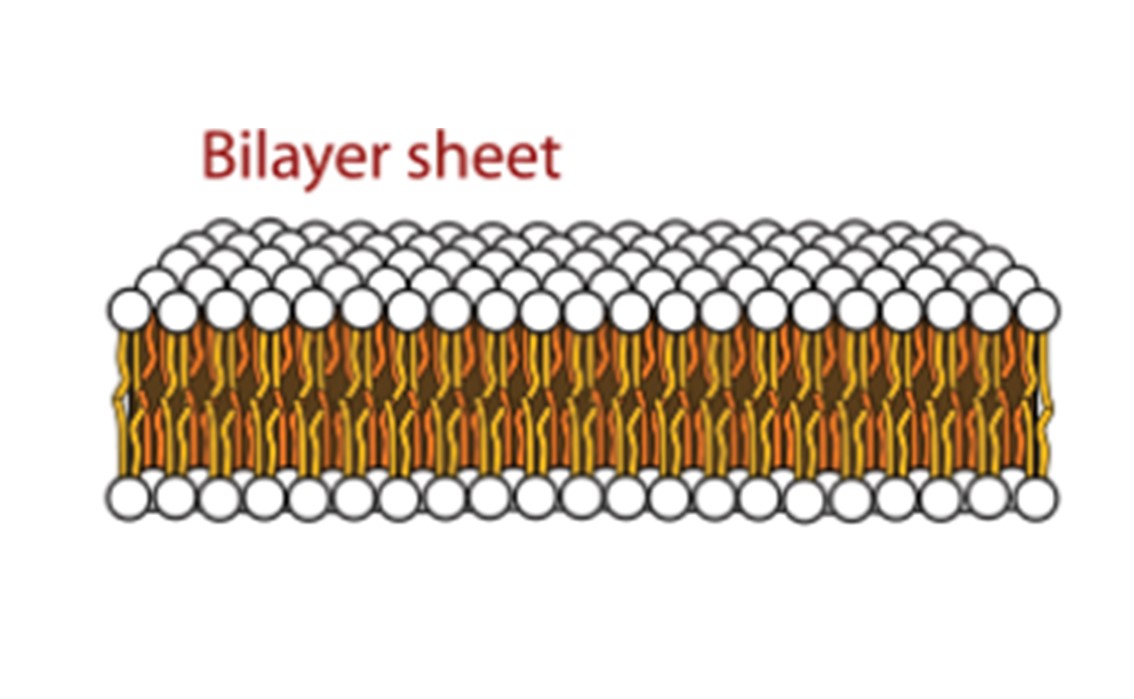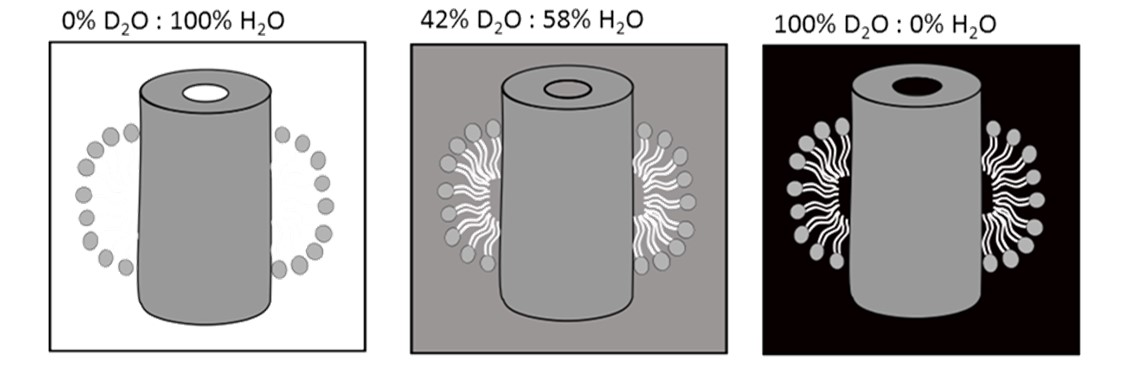Structure
Surfactants lower the surface tension between two liquids, between a gas and a liquid, or between a liquid and a solid and have applications in many different industries. World production of surfactants is approximately 15 Mton each year, of which about half are soaps.
Usually, surfactants are organic compounds that contain both water-insoluble groups (hydrophobic tails) and water-soluble groups (hydrophilic heads); they are amphiphilic. This enables them to diffuse in water and adsorb at interfaces between air and water, or between oil and water. The tail group can extend out of the bulk water phase, into the air or into the oil phase, while the water-soluble head group remains in the water phase. By adsorbing onto the interface, they lower the surface tension.
Sodium stearate is the primary component of soap. It has a long hydrocarbon tail, which is insoluble in water (yellow), and a water-soluble head group (green).
Surfactant aggregation
To satisfy the preferential interactions of both the water-loving and water-hating groups present, the surfactant molecules self-assemble into aggregates. The type of aggregate they form: whether it's spherical, layered, or another arrangement, is dependent on the shape and chemistry of the molecule and the relative contributions of the hydrophobic and hydrophilic parts to this.
In the situation of a primarily aqueous phase, with small oil or dirt impurities, the surfactant molecules will group together around the impurity droplets to form spherical aggregates known as micelles. In these micelles, the hydrophobic tails form the core of the aggregate, where the oil is, and the hydrophilic heads are in contact with the surrounding liquid.
Scheme of a micelle formed by phospholipids in an aqueous solution. SuperManu When the bulk phase is organic, the opposite occurs, and the hydrophilic head groups form the core of the aggregate and the hydrophobic tails are in contact with the surrounding liquid.
Scheme of a micelle formed by phospholipids in an organic solvent. SuperManu The ability to form micelles enables them to hold dirt and oils in suspension, giving surfactants a range of applications, including detergents, personal care, the petrochemical and agrochemical industries, firefighting, and healthcare.
When the hydrophobic tail is proportionally longer, such as when the surfactant is a lipid in a biological system, the molecules self-assemble into bilayers so the hydrophilic head groups are able to be in contact with water and the tails are not.

Investigations using neutrons
Small Angle Neutron Scattering (SANS) is an excellent technique for investigating structures about 0.1-100 nm in size. The technique is well suited for investigating and characterising surfactant micelles and emulsion droplets, which are typically 2-10 nm in diameter.
Reflectometry measurements with neutrons (and X-rays) are extremely important in the study of thin films and stratified media; in this case, "thin" refers to nanometre length scales. Films with thicknesses of this order of magnitude are extremely important and, in biology, examples include membranes and cell walls
Deuteration
The major advantage of neutron studies compared to X-ray experiments is the access to contrast variation by exploiting the different interaction of neutrons with hydrogen (H) and deuterium (D). This enables contrast variation measurements, where selectively deuterating the different components of a surfactant-containing system enhances some areas in the system, as others appear practically invisible. This opportunity is widely applied in neutron investigations of biological and other organic materials.

Isotopic
contrast allows for individual components to be identified amongst complex samples.
The
Deuteration facility at ISIS makes deuterated surfactants for neutron and muon techniques. Their synthesis can be very challenging, as the route to make C-H bonds can be very different for C-D bonds, in which case alternative step-wise routes have to be explored. Some synthesis routes have involved more than 16 steps! The lab's work recently featured as one of the
SINE2020 case studies, and can be read on
their website.
Applications
- Healthcare: Phospholipids form a key part of the outer membrane of bacteria. Neutron reflectivity measurements on INTER played a key part in a large research study that challenges the thinking about how bacteria maintain the structure of their outer membrane.
- Fire-fighting foams: Researchers at the University of Bristol investigated fluorocarbon surfactants used in fire-fighting foams on SANS2D and Inter to uncover more efficient and environmentally friendly formulations.
- Petrochemicals: Scientists from Swansea University have used LOQ to investigate a new and, potentially, 'greener' way to extract oil that might otherwise remain trapped deep within rocks.
- Environmental studies: Recent work on the INTER reflectometer demonstrates the utility of combining an infrared beam with the neutron beam in order to probe complex systems critical to the climatic function of clouds and aerosol particles.
- Detergent investigations: An collaboration of scientists from Durham University and Procter & Gamble have been using neutron reflectometry on SURF and Inter to investigate surface segregation in water-soluble polyvinyl alcohol films found in common household laundry detergent pods.
- Skin care: Work carried out at ISIS, in collaboration with GSK, was presented recently at an ACS conference. SANS2D was used in the first investigation of the molecular structure of lotions with neutron scattering and X-ray experiments. Not only did the scientists find the distribution of ingredients differs from what the textbooks list, they also discovered micellar structures that had never been seen before in skin creams. To hear from the researcher, watch her press interview here.
